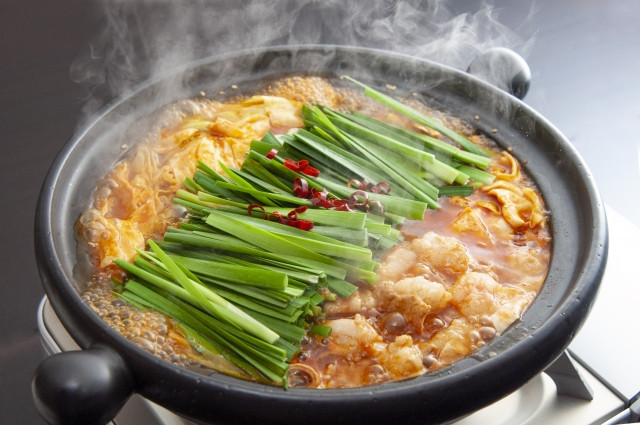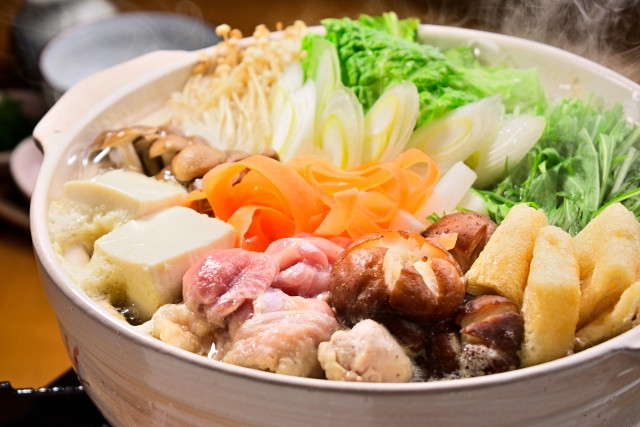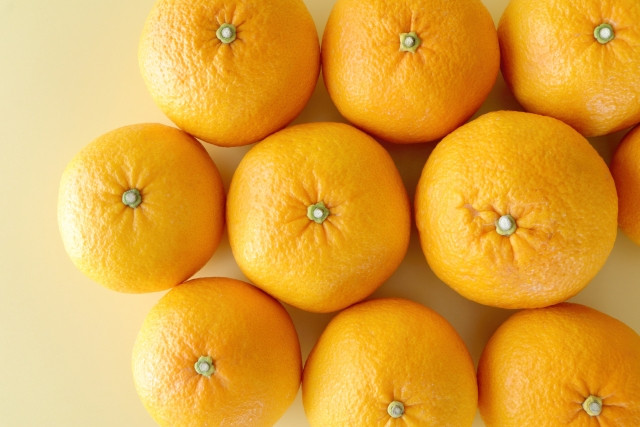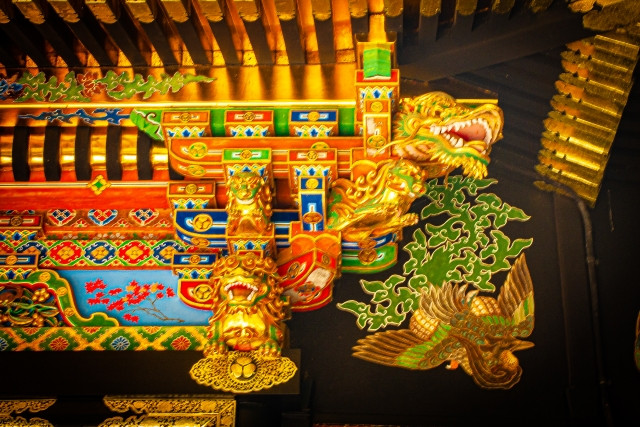Culture and tradition, delicious food, and beautiful sights. There are many things in Japan that can only be enjoyed during winter.
Table of Contents
- Japan in Winter: Climate, Temperature, Months
- Characteristics of Japan in Winter: Culture and Traditions
- Winter Food in Japan
- Japan Winter Traditional Celebrations and Events
- Things to Do in Japan in Winter
- Japan Winter Travel: Best Places to Visit in Japan during Winter
- To Close
Japan in Winter: Months, Climate, Temperature

Japan Winter Months are from December to February
Winter in Japan is from December to February. Winter is basically the cold season. In January, the temperature in Tokyo drops to around 10°C/50°F during the day and 3°C/37°F in the morning, evenings and night.
Japan Winter Temperature and Climate
Winter in Hokkaido is very cold, but Okinawa (the southernmost prefecture) is warm even in water.
Most of Japan’s main island belongs to the temperate zone but Hokkaido belongs to the subarctic cold zone. Winters in Hokkaido last for a long time, and it is severely cold in mid-winter. The average daily temperature often drops below zero, so it is essential to take measures against the cold.
On the other hand, since Okinawa belongs to the subtropical zone, it is warm all year round. During winter, the temperature in Okinawa is around 20°C/68°F during the daytime which feels like the main island’s autumn climate.
Snow on the Sea of Japan Side
In winter, as the Siberian High develops on the continent and the Aleutian Low develops in the North Pacific, Japan is subject to a north-westerly monsoon carrying Siberian cold air. The monsoon carries moisture from the Sea of Japan, which hits the high mountains in the middle of the Japanese archipelago and forms clouds, resulting in heavy snowfall on the Sea of Japan side.
The Pacific side, on the other hand, experiences dry winds that blow down from the mountains that results in more sunny days.
Keeping Warm in Japan During Winter
Japan gets really cold during winter, so here are some heating goods to get in Japan to keep you warm for your winter travels!


Writer's Pick
Characteristics of Japan in Winter: Culture and Traditions

Speaking about winter in Japan, there's...
In this part, we will introduce the classics that remind local Japanese that winter has come upon Japan.
Kotatsu

When it comes to Japanese winter culture and tradition, many people think of kotatsu「こたつ(炬燵)」. A kotatsu is a Japanese heating appliance consisting of a table with a heat source and a futon cover. It is common in Japanese homes to put your legs under the kotatsu and watch TV while eating mandarin oranges.
New Year’s Bell

Ringing the New Year’s Bell is a Buddhist tradition in Japan in which temple bells are rung from New Year’s Eve to New Year’s Day. The New Year’s Eve bell is rung 108 times to get rid of the 108 worldly desires (desire and distraction).
While listening to the New Year’s bells ring out in the quiet winter night, the New Year’s in Japan is welcomed in a calm and solemn atmosphere. A contrast to the grand and boisterous New Year celebrations in other countries.
Hot Springs

Hot springs, or onsen (温泉), where you can refresh your mind and body, are especially popular during the cold season. As well as the hot springs themselves, staying in an elegant onsen ryokan (hot spring inn) is also an enjoyable experience.
Lucky Bag

Fukubukuro (福袋), or lucky bags, usually sold on New Year’s Day, are another symbol of winter in Japan. A fukubukuro is a bag that contains a number of random items and is sold at a discounted price. Sellers get to clear stock before the new year and buyers get to enjoy the mystery and excitement of opening the bag and finding out what they got at substantially discounted prices. The fukubukuro culture originated in Japan and is quite popular with foreign nationals living in Japan as it has not been popularized overseas.
In recent years, more expensive and even luxury brands have started joining in on the fukubukuro culture. Many of them offer a sneak peek at what you can possibly get from the lucky bag. Some may be quite expensive, and may be available for pre-order.
Winter Food in Japan

Here, we will introduce dishes that are often eaten in Japan during winter. All the food is for warming up your cold body and is very nutritious.
鍋 / nabe / hotpot

Hot pot dishes that warm your body are perfect for the cold Japanese winter. Cooked by simmering in a hot pot, you can enjoy a well-balanced meal of plenty of vegetables, meat, seafood, mushrooms, tofu, and many other ingredients to your liking. One of the greatest charms of nabe cuisine is its hearty healthiness. There are local nabe dishes all over Japan, so give them a try when travelling across the country.
すき焼き / sukiyaki

Sukiyaki, along with sushi and tempura, are popular Japanese dishes among foreign nationals. Sukiyaki stock called「割り下 warishita」is made from a mixture of soy sauce, mirin and sugar. Sukiyaki is eaten in a unique manner. After the meat is cooked in the warishita, it is dipped in raw beaten egg and eaten. Eaten this way, you can truly enjoy the taste of the meat, the seasoning of warishita, and the freshly beaten egg.
みかん / mikan / mandarin orange

In Japan in winter, many families eat mikan with their legs nestled under the kotatsu. Mikan are not just sweet and delicious, but they also contain a lot of nutrients such as Vitamin C and citric acid, making it a healthy nutritious food to keep up your health during winter. The white pith and pulp of the mikan contains Vitamin P, so try eating them together.
Fish and Seafood

There are many types of fish such as yellowtail, cod, pufferfish and flounder that are in season during winter, and therefore more delicious! Dishes using seasonal fish, such as teriyaki yellowtail (ぶりの照り焼き), yellowtail radish (ぶり大根), cod meunière, and boiled flounder, can be said to be part of winter food in Japan traditions.
Seafood such as oysters, Japanese spiny lobster (伊勢海老 ise ebi), and cod roe are also known as winter ingredients. Crabs are especially popular and are a favourite winter delicacy.
焼き芋 / yakiimo / baked or roasted sweet potato

Yakiimo, or baked/roasted sweet potatoes, is a popular food in Japan in autumn and winter. Eating a freshly cooked soft and moist sweet potato warms up your body. Sweet potatoes have different textures depending on the type, so try a variety of them to find your favourite!
You can bake your own sweet potatoes at home, or simply stroll into supermarkets or konbinis in Japan. Many of these places have freshly baked sweet potatoes. Some of them also display the time the sweet potatoes finish cooking (焼きたて時間 yakitate jikan), so you can time your visit when they’re piping hot!
おでん / oden

A classic winter food in Japan is oden. Oden is a dish of various ingredients like egg, radish, fish cakes, konnyaku, and chikuwa cooked in a soy sauce flavoured dashi. Convenience stores usually have them starting from early September. Daikon radish, a classic winter vegetable, is a popular ingredient in oden.
Japan Winter Traditional Celebrations and Events

Let’s check out what traditional celebrations and events there are in Japan during winter.
冬至 / touji / winter solstice

The longest day of the year is called the summer solstice (夏至 geshi), and the shortest day of the year is called the winter solstice (冬至 touji). The winter solstice is usually around December 22nd. On the winter solstice, there is a tradition of eating pumpkins and taking a yuzu bath.

大晦日 / oomisoka / New Year’s Eve

In Japan, the last day of each month is called “misoka (晦日 or 三十日)”, and for the last day of the year December 31st is called “oomisoka (大晦日)”, aka “New Year’s Eve”.On New Year’s Eve, it is common for families in Japan to eat toshikoshi soba (年越しそば) to welcome the New Year. Eating “thin and long” and “easily cut” soba carries the wish for “longevity” and “cutting away the year’s misfortunes”.
New Year’s Eve bells are also a New Year’s Eve event and tradition. Usually around 23:45 (11:45 pm) on the 31st, the New Year’s bells start ringing. Although hatsumode (first shrine visit of the New Year) is more prevalent these days, there are still many people that pay a shrine visit on New Year’s Eve to countdown and welcome the New Year. This practice is called「二年参り ninen mairi」and was the main custom before hatsumode was introduced.
In Japan, there is also a spring-cleaning culture called “oosoji (大掃除)”, or “major cleanup”, that is done around mid-December with an old rule to finish cleaning by the 31st. Let’s clean up our houses by Oomisoka and be ready to welcome and celebrate the New Year with family and friends!
正月 / shougatsu / New Year

Shougatsu (正月) is an event to celebrate the New Year. “Shougatsu” is actually another word for the month January, but nowadays the period from January 1st to 3rd that is called “san-ga-nichi (三が日)”, or the period of “matsu-no-uchi (松の内 - New Year’s Week)” which is until January 7th, is called “shougatsu”. In some regions in Japan, the period up until January 20th is called “shougatsu”.

Shougatsu is considered to be the oldest event and celebration in Japan. It is an event filled with many programmes and entertainment. The Japanese decorate their houses with New Year’s decorations such as kagami mochi (鏡餅 - New Year offering consisting of 2 stacked mochi stacked with a bitter orange on top, and cut and eaten on January 11th), hatsumode (初詣 - first shrine or temple visit of the New Year), and eat traditional New Year’s dishes like osechi (お節).
Things to Do in Japan in Winter
Here are some activities you can enjoy in Japan during winter.
Skiing
When it comes to winter activities in Japan, nothing beats winter sports such as skiing and snowboarding. Winter sports, unique to winter, are gaining popularity as you can enjoy moving your body while enjoying the beautiful scenery of snowy mountains. Leisure activities such as smelt fishing and ice climbing are also popular. In addition, snowball fights and building snowmen are still enjoyed by children. Other Winter Sports in Japan include:





凧揚げ / takoage / kite flying

Takoage is a recreational activity of kite flying. The kite is held up and floats in the sky using the force of the wind while being controlled by string. There are similar activities all over the world, but in Japan it is popular as a traditional New Year’s game. Traditional Japanese kites made of paper, cloth, and bamboo are called “wadako (和凧 - Japanese kite)”, while vinyl kites imported from overseasons are called “youdako (洋凧 - Western kite)”, or simply “kaito (カイト - katakana of kite)”.
There are other traditional New Year’s games, such as spinning tops, Japanese badminton (羽根つき hanetsuki), and lucky laugh (福笑い fukuwarai), which have become traditional Japanese traditions.
Japan Winter Travel: Best Places to Visit in Japan during Winter

Japan has many beautiful places to visit all year round but some places become even more beautiful, almost breathtakingly so, during certain seasons. Here, we will introduce popular sightseeing spots especially during winter in Japan, whether it’s because of a winter-limited event or is simply nicer in winter.
Ginzan Onsen

Ginzan Onsen in Yamagata Prefecture is a nostalgic hot spring town. Many tourists visit Ginzan Onsen for the sight of the snow-covered Taisho romantic hot spring town lit by gas lamps. It is also famous for being the stage of a TV series.

Sapporo Snow Festival

The Sapporo Snow Festival is an annual event held in Sapporo, Hokkaido from late January to mid-February. Approximately 2 million tourists from Japan and abroad visit each year to see the giant snow sculptures. It is one of the world’s 3 largest snow festivals, and is famous as one of Hokkaido’s largest events.
There are other things to enjoy in Sapporo as well during the winter months, such as the winter illuminations that supplement the snow festival, ski resorts, and delicious genghis khan and crab buffet enjoyed with local Sapporo beer.
Kusatsu Onsen

Kusatsu Onsen in Gunma Prefecture is one of Japan's 3 Major Hot Springs (日本三大名泉). More than 32,000 litres of hot spring water flows out every minute, making it Japan's largest natural hot spring. The acidity of the hot water is so strong that it is said to cure anything except love sickness. The scenery of the white smoke rising from the hot water field in the centre of the hot spring town lifts tourist’s mood while travelling.
Roppongi’s Keyakizaka Illumination
Winter illumination events are held all over Tokyo in winter. This is one of the most popular winter illuminations in Tokyo, the Keyakizaka Illuminations in Roppongi Hills. Approximately 700,000 white and blue LED bulbs light up the approximately 400 m cedar tree lined street in a “SNOW & BLUE” theme.
Nikko Toshogu

Among the shrines and temples of Nikko that are registered as World Heritage Sites, Nikko Toshogu Shrine is a particularly famous tourist spot. Nikko Toshogu is a shrine where Ieyasu Tokugawa is enshrined. The gorgeous beauty of the lacquered and richly colored buildings and the many carved pillars is the attraction, but they look different from their usual appearance when blanketed in snow. The charm of visiting Nikko Toshogu in winter is that you can enjoy the history of Japan with a scenery of snow.
Shirakawago

Shirakawago in Gifu Prefecture is a gassho-style village registered as a World Heritage Site. In winter, you can see snowy scenery that is unique to heavy snowfall areas. Shirakawago in winter is lit up every year. The fantastic almost ethereal view of warm yellow light shining through the windows as the gassho houses float on the snow’s surface attracts many tourists willing to brave the cold.
Jigokudani Monkey Park

At the Jigokudani Monkey Park in Nagano Prefecture, monkeys can be seen enjoying a hot spring bath. The key point of this attraction is that human intervention is kept to a minimum, so unlike zoos, the monkeys can be seen close to the wild. There are also hot springs, inns, and cafes for humans to enjoy themselves. Monkeys in hot springs are rarely seen in summer, so if you want to see monkeys bathing in the snowy landscape, go in winter.
To Close

Japan in winter is cold and chilly, but there are many attractions unique to winter, such as food, culture, and activities. To truly enjoy all four seasons of Japan, visit in winter and enjoy the snowy scenery whilst warming up by eating hot pot dishes.


































